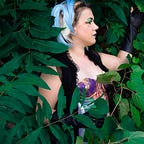Nothing New Under the Sun
Pyramus and Thisbe whisper to each other through a crack in the stone wall dividing them and fall in love as they talk every night. Their families, who despise each other, forbid them from meeting in person. Finally, they sneak out to meet, but Thisbe is frightened away by a lioness and runs, leaving her veil behind. When Pyramus arrives, he sees the bloodied garment and assumes that Thisbe has been devoured. Heartbroken, he kills himself. Thisbe returns to find his body and, refusing to live without him, kills herself as well.
Sound familiar? It’s the Greek myth, recorded in the Metamorphoses, that inspired Romeo and Juliet.
During the Renaissance, a renewed interest in Classical humanities contributed to the explosion of art and literature that we now identify as a defining moment in Western civilization. After the so-called Dark Ages, the Renaissance, which actually refers to several concurrent movements in different parts of Europe, helped reify several world powers that commissioned important artworks and consolidated cultural and sociopolitical power. The Renaissance proves that “pop culture” is a powerful sociopolitical force, and today, we tend to divide our entertainment into “high” and “low” culture.
That’s why when I hear people whine that contemporary music, film, and art is “crap” compared to the “greats,” I remind them that…
